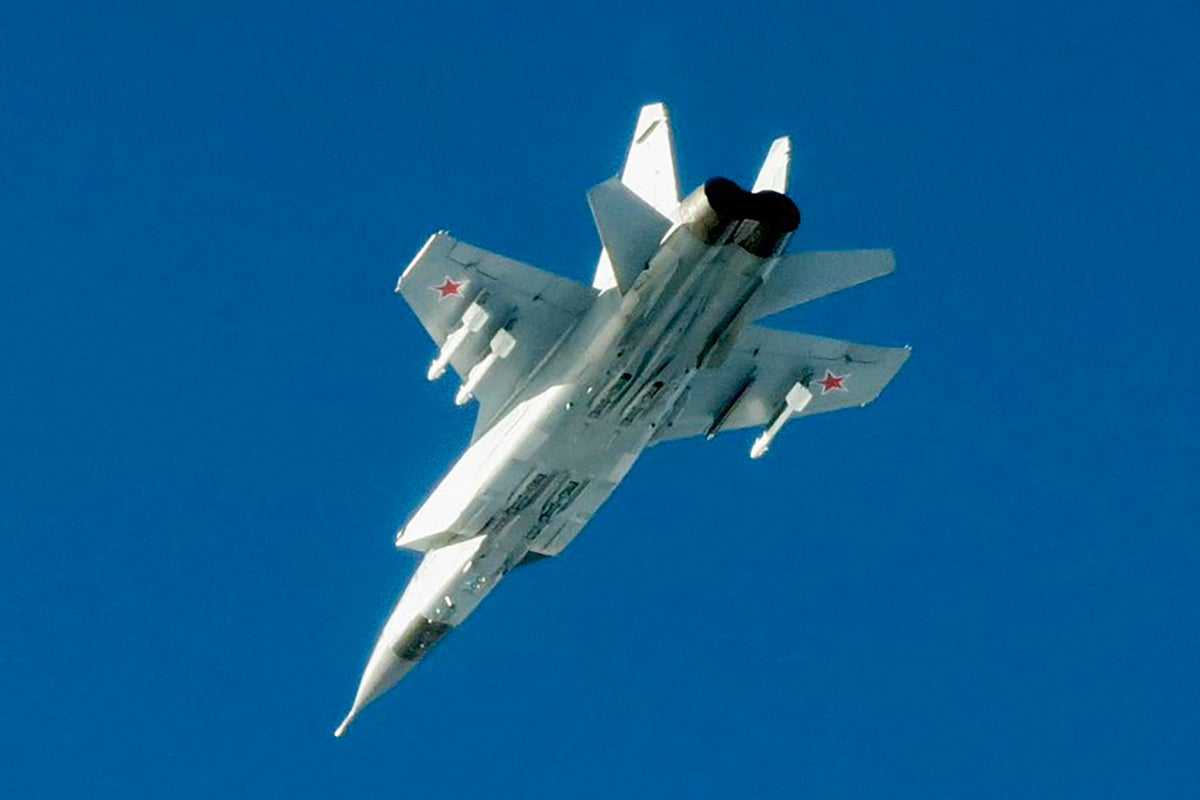
Europe’s NATO allies have been shaken by Russian provocations on the bloc’s eastern frontier in recent months, reporting a string of drone incursions and scrambling jets to shadow aircraft flying over the Baltic.
Concern has mounted since September, when nearly two dozen drones crossed over into Poland amid a large-scale Russian drone attack on Ukraine. Days later, three Russian military jets violated Estonia’s airspace for 12 minutes.
Subsequent activity near the border has forced European countries to close airports and borders, and to reconsider how equipped they are to deal with foreign intrusions.
Analysts say that Russia is deliberately provoking NATO to see how it reacts, gathering information that might be useful when it decides the time is right to make a move against an alliance member.
Interceptions over the Baltic
Poland said on 30 October that its fighter jets had been scrambled to intercept a Russian reconnaissance plane over the Baltic Sea in the second such incident in a week.
Two days earlier, Polish jets intercepted a Russian aircraft flying in international airspace over the Baltic without a filed flight plan and with its transponder turned off.
Separately, Polish airports in Radom and Lublin reopened on Thursday after being forced shut by military aviation activity. Russian attacks on facilities in bordering Ukraine saw Polish and allied planes scrambled.
Weather balloons over Lithuania
Lithuania said on 29 October it would continue to close border crossings into Belarus until November in response to airspace disruptions by smugglers’ balloons.
The balloons, carrying cartons of cigarettes, forced airports in Lithuania to close several times in October. The EU said the balloons “occur in the context of a broader targeted hybrid campaign”.
Belarus’ president called the borders a “crazy scam” and accused the West of fighting a hybrid war against Belarus and Russia.
Naval provocations off Denmark
Denmark accused Russian warships of repeatedly sailing on collision courses with Danish naval vessels and disrupting navigation systems in its straits connecting the Baltic to the North Sea at the start of October.
Such incidents risk unintended escalation, the defence intelligence ministry said on 3 October. The ministry said that Danish vessels and helicopters had been targeted by tracking radars and physically pointed at with weapons.
Drone sightings over Denmark
Denmark’s armed forces reported at the end of September that unidentified drones had been observed near military installations.
On 24 September, airports in Aalborg and Billund had to close briefly, reporting drone activity. On 22 September, Copenhagen airport also had to close. Denmark’s prime minister said that Russian involvement could not be ruled out. The Kremlin called the allegations “unfounded”.
In nearby Norway, Oslo airport was also closed over a possible drone sighting.
Fighter jet incursions in Estonia
Three Russian military jets violated NATO member Estonia’s airspace for 12 minutes on 19 September in an “unprecedentedly brazen” incursion, according to the government.
Estonian foreign minister Margus Tsakhna said it was the fourth time that Russia has violated Estonian airspace in 2025.
The foreign ministry said that the incursion involved three Russian MIG-31 fighters and took place over the Gulf of Finland. The Russian charge d’affaires was summoned and given a protest note, a ministry statement said.
Military drills on NATO’s frontier
Russia and Belarus carried out joint military drills in Belarus between 12 and 16 September – an event with prior planning, but coinciding with raised tensions over recent drone incursions.
Analysts observed at the time that Russia had used the drills in 2021 to build up troop numbers before attacking Ukraine months later.
Poland, Lithuania and Latvia all ramped up security around the 2025 exercises, which included ‘planning the use of’ nuclear weapons.
Drone incidents in eastern Europe
A Russian drone breached Romanian airspace on 13 September, prompting the military to scramble fighter jets.
The incident occurred during a Russian attack on Ukrainian infrastructure near the border, the defence ministry said.
Poland reported two days later that a drone had flown over the presidential palace in what it called a “provocation”. Two Belarusians were arrested.
Major drone incursion in Poland
After months of allegations of so-called ‘hybrid’ attacks on Europe, matters came to a head on 9 September as Poland reported between 19 and 23 intrusions into Polish airspace. NATO responded with a multinational force of jets to shoot down a number of them.
Prime Minister Donald Tusk warned that the country was the closest to armed conflict since the Second World War.
While Russia has said it didn’t target Poland, and Moscow’s ally Belarus said that the drones went astray because they were jammed, European leaders have said they are certain that the incursions were a deliberate provocation by Putin.
Two days prior, Estonia reported a Russian Mi-8 helicopter violating its airspace over the Baltic Sea.
Russia’s hybrid attacks
Russia has also targeted European countries through other methods, which have been described as “hybrid warfare”. These range from cyberattacks to sabotage operations and disinformation campaigns.
“This happens all the time,” says Ms Seskuria. “It has much deeper implications on European security, and there are various instances where Russia is directly intervening in elections. We saw this happening in Moldova last year, and this year ahead of their parliamentary elections.”
Russia has been accused of meddling in the elections of European nations for years.
The UK’s National Cyber Security Centre judged in 2022 that Russia had been behind a cyberattack with Europe-wide impact just an hour before its invasion of Ukraine.
While Ukraine’s military was the primary target of an attack on high-speed broadband service Viasat, wind farms in central Europe and both personal and commercial internet users were also affected.
Disinformation campaigns in Western countries have also been linked to Russia.
“There are consistent efforts to push these narratives that are pro-Russian, portraying the West as an aggressor rather than a Kremlin that wants to violate Ukraine’s sovereignty and fights this war for its own imperial ambitions,” Ms Seskuria said.
